Republican Truth and Real Truth: GSEs and the Housing Bubble
In any wars of words in an election season, truth is often an early casualty. The war of words between Mitt Romney and Newt Gingrich is no exception. The two Republican front-runners are currently telling each other carefully fabricated stories about their own pasts that cover tracks and reinvent reputations.[1] But in the end that is less damaging to the entire democratic process than the accidental and less contrived stories that, in passing, they are also telling us. Right now, as they attack each other with increasing venom, the four remaining Republican presidential candidates are collectively rewriting a critical part of our immediate past – and in the process are seriously misleading us as they battle with each other.
The main rewrite now underway in their twice-weekly televised clashes is a rewrite on housing finance. In Florida, and no doubt soon again in Nevada where the foreclosure crisis is even more severe, the men seeking the Republican nomination persistently blame the housing bubble on public policy and on federally underwritten regulatory agencies: on Fannie Mae and Freddie Mac, and on the evil impact of the Community Reinvestment Act.
They did so in Tampa last Monday in the first of their two Florida debates,[2] and they did so even more starkly in their second debate in Jacksonville on Thursday night.[3] They said this:
Mitt Romney: [to Newt Gingrich, in Tampa] “You also spoke publicly in favor of these GSEs, these government-sponsored enterprises, at a very time when Freddie Mac was getting America in a position where we would have had a massive housing collapse….Freddie Mac did a lot of bad for a lot of people.” [Then, of Newt Gingrich, in Jacksonville] “Fannie Mae and Freddie Mac were a big part of why we have the housing crisis in the nation that we have….He should have stood up and said, look, these things are a disaster. He should have been anxiously telling the American people that these entities were causing a housing bubble that we’re seeing here in Florida and around the country.”
Rick Santorum [in Tampa] “There were several of us in the United States Senate back in 2005 and 2006 who saw this on the horizon, who saw the problem with Fannie and Freddie, and tried to move forth with a bill…we said, if you don’t constrain these two behemoths from continuing to underwrite this subprime mortgage problem, then we’re going to have a collapse. Unfortunately that proved – proved to be true.” [in Jacksonville] “In 2006…in warning of a meltdown and a bubble in the housing market, I stood out, I stood tall, and tried to get a reform….to gradually decrease the amount of mortgage that can be financed by Freddie – or underwritten by Freddie and Fannie over time, keep reducing that until we get rid of Fannie and Freddie.”
Ron Paul: [in Tampa] “…in addition to that, it was an insult to injury, because they kept interest rates especially low with Freddie Mac and Fannie Mae, and there was a line of credit there, and it was a guarantee. As a matter of fact, I had introduced legislation 10 years before the bubble burst to eliminate that line of credit. But then the Community Reinvestment Act added more fuel to it, you know, forcing banks to make loans that are risky loans.” [in Jacksonville] “…we know how the bubble came about. It was excessive credit, interest rates held too low, too long, the Federal Reserve responsible for that. Community Reinvestment Act, which is Affirmative Action telling banks that they have to make these risky loans.”
In focusing on Newt Gingrich’s relationship with Freddie Mac in this fashion, his three main challengers offer us an explanation of the housing crisis that puts full responsibility for it (and its consequences) back onto the GSE’s, the Federal Reserve and the CRA; and they are not alone in this. Theirs is a view recently reinforced by the SEC decision to prosecute senior GSE managers for failing to disclose the scale of the subprime loans on their books;[4] by the widely-read newspaper articles of the GSE’s long-time critic, Peter Wallison;[5] and by the extensive coverage of the new book by Gretchen Morgenson and Joshua Rosner, Reckless Endangerment, one that singles out Fannie Mae for particular criticism and censure.[6]
The only problem with that view is that factually it is, in all its essentials, entirely misleading!
- Blaming a Community Reinvestment Act passed in 1979 for a crisis that emerged only three decades later was always a stretch. If the Act was guilty, its guilt certainly took a very long time to kick in; and it is a claim which recent research has entirely discredited. As Levitin and Wachter have reported on the basis of their careful survey of all the relevant research data, “there is little evidence that the CRA contributed directly to the bubble. CRA subject institutions made a disproportionately small share of subprime mortgage loans,” and “relatively few subprime loans even qualified for CRA credit ,either because they were made outside CRA assessment areas or were made to higher income borrowers.”[7] The findings of the Federal Reserve staffers Avery and Brevoort’s were similar: that “areas covered by the CRA experienced lower delinquency rates and less risky lending,”[8] not higher ones. “According to recent Fed data, 75 percent of higher-priced loans made during the peak years of the subprime boom were made by independent mortgage firms and bank affiliates not covered by the act.”[9] “Only 6% of…subprime loans had any connection to the law. Loans made by CRA-regulated lenders in the neighborhoods in which they were required to lend,” the Financial Crisis Inquiry Report noted, “were half as likely to default as similar loans made in the same neighborhoods by independent mortgage originators not subject to the law.” Which is presumably why the Report could definitely conclude, as it did, that “the CRA was not a significant factor in subprime lending or the crisis.”[10]
- Timing matters too in relation to the GSEs and the development of a housing bubble. There is overwhelming evidence that the role of the GSEs in the explosion of housing prices and the spread of subprime lending was, at most, secondary and late. It was definitely not primary and early. The GSE’s did have an implicit government guarantee of solvency that enabled them to borrow at lower rates; and they did defend that special status with heavy lobbying. They also were the source of the securitization of mortgages that slowly transformed US housing finance from a “lend and hold” model of mortgaging to a “lend and sell on” one. But what they did not do was either initiate the lowering of underwriting standards that fueled the explosion of subprime lending, or spread those toxic assets through the U.S. and then global financial systems. Private lenders were responsible for the first of those two crucial drivers of the housing crisis, and private banks were responsible for the second. As Mark Zandi has recently noted, in 2002 before the housing boom, the two agencies held almost 54% of all mortgage debt. By summer 2006, at the peak of the bubble, their market share was down to 40%; and “it is difficult to see how the agencies could have been responsible for inflating the housing bubble at a time when they were losing a full 14 percentage points of market share.”[11] Only as private lenders ran into difficulties did Fannie and Freddie move in to take up the slack, jumping ‘back into the housing market at precisely the wrong time.”[12] It was in competition with private lenders, and in order to recapture market share, that eventually the GSEs did indeed lower their underwriting standards. But that belated lowering was a consequence of Fannie and Freddie being privately-owned, not of being government-sponsored. It was a lowering driven by shareholder pressure, demanded in order to compete with private-label mortgage backed securities “In contrast, the wholly public FHA/Ginnie Mae maintained their underwriting standards and ceded market share.”[13] It is data like this that led the Financial Crisis Inquiry Commission to report that, in their view, “the two entities contributed to the crisis but were not a primary cause.”[14]
- In consequence we would do well to discount both the Wallison thesis, and that advanced by Morgenson and Rosner. The Wallison enthusiasm for the SEC decision to prosecute senior GSE managers – his assertion that the prosecution “has made it clear that the two government sponsored enterprises played a major role in creating the demand for low quality mortgages before the 2008 financial crisis”[15] – has been effectively rebutted by Joe Nocera. As Nocera noted recently: the “SEC complaint makes almost no mention of affordable housing mandates. Instead it charges that the executives were motivated to begin buying subprime mortgages – belatedly – because they were trying to reclaim lost market share, and thus maximize their bonuses.”[16] And even the Morgenson-Rosner volume, though widely recognized as a fine piece of reporting on misbehavior by senior figures within and around Fannie Mae in and after the Clinton years, would appear to mislead on the timing issue. To quote Robert Kuttner’s review – one of several to make the point – when Morgenson and Rosner wrote that “Fannie Mae led the way in relaxing loan underwriting standards, a shift that was quickly followed by private lenders,”[17] “they have that backward…. only late in the game did Fannie Mae seriously water down its standards.”[18] “The GSEs did buy subprime mortgages in the 2000s, but contrary to the impression given by Morgenson and Rosner, their purchases were always a distinct minority of those sold by Wall Street;”[19] a fact that makes Kuttner’s judgment worth citing at length.
” It’s true — and appalling — that Fannie became the largest purchaser of subprime loans from one of the worst mortgage hustlers in the game, Jim Johnson’s pal Angelo Mozilo, the CEO of Countrywide Mortgage. But that was in the period from 2003 to 2005, when Wall Street had already provided the financing and created the securities market for subprime. Fannie was playing catch-up. So in the rogues’ gallery of scoundrels that caused the financial collapse, a fair reckoning would rank Fannie Mae fifth or sixth. Far higher on the list would be: Alan Greenspan’s Federal Reserve…; the Office of Thrift Supervision…; the Wall Street firms that bankrolled subprime lenders and turned their high-risk loans into securities; the credit-rating agencies that blessed toxic subprime securities with Triple-A ratings; the SEC’s failure to police those agencies; and, of course, the subprime lenders themselves.”
- So responsibility for the housing bubble needs to be placed instead squarely where it properly belongs: on the shoulders of inadequately regulated private financial institutions. As Mark Zandi put it “the biggest culprits in the housing fiasco came from the private sector, and more specifically from a mortgage industry that was out of control…lenders who originated home loans, investment bankers who packaged them into securities, rating agencies that misjudged those securities, and global investors who bought them without much, if any, study.”[20] Countrywide Financial was a case in point. Washington Mutual was another.[21] (Countrywide Financial was the largest single provider of mortgages in the United States in 2006. In 2005 it had accounted for 8% of all new asset-backed securities globally.[22]) Add to that list, flippers – real estate investors: recent research suggests that “in states that experienced the largest housing booms and busts, at the peak of the market almost half of purchase mortgage originations were associated with [such] investors.”[23] Moreover, “only one of the top 25 subprime lenders in 2006 was subject to affordable-housing laws. For the most part, private firms such as Countrywide Financial were issuing ‘non-traditional’ mortgages in order to package them off to Wall Street and make money.”[24] And if you don’t believe that, try the FCIC Report instead: blaming the financial crisis the followed the housing bubble on “an explosion in risky subprime lending and securitization…widespread reports of egregious and predatory lending practices, dramatic increases in household mortgage debt, and exponential growth in financial firms’ trading activities.”[25]. Or the Levin-Coburn Senate Committee Report, “showing how high risk lending by U.S. financial institutions, regulatory failures, inflated credit ratings and high risk, poor quality financial products designed and sold by some investment banks, contributed to the financial crisis.”[26] It is hard to know how many more blue-ribbon commission of inquiries the Republican presidential front-runners will need before they concede publicly what they must know privately: that blaming the GSEs for the housing bubble may be good politics (playing to their party base’s antipathy to effective public regulation of private markets) but it is bad history – bad because untrue.
- If there is anything that can be salvaged out of the Republican fairy tale on the origins of the housing bubble, it is the Federal Reserve’s low interest rate policy and its failure adequately to see the danger of a bubble and move to regulate it. That much of the Ron Paul case has merit. But what Ron Paul regularly omits to mention, when making that case, was that the Federal Reserve was then under the leadership of Alan Greenspan: the Ayn Rand enthusiast, the deregulation guru, and the advocate of the efficient market hypothesis thesis that so mistakenly reassured the banks amid their speculative frenzy.[27] The housing bubble arose not because the Federal Reserve was dominated by heavy-handed Keynesian interventionists, as the Republican candidates now imply. The housing bubble arose precisely because it was not so led.
The big problem with all this Republican rewriting of the record is that it makes it ever more difficult to design good policy for the future. The rewriting of history serves their immediate political purposes, but not our long-term needs. The Republican presidential candidates need to downplay the causal role of unregulated finance in the immediate past, and to overstate the role of Fannie and Freddie. They need to do both those things in order to justify still more financial deregulation in the future, and to undermine the credibility of GSEs that are now fully in public hands and so available for direct policy use. Santorum would close Fannie and Freddie. Obama might yet use them. Stopping that use is the subtext of the housing bubble story now being concocted in one Republican debate after another.
There was a telling moment in the Florida exchange that went largely unreported on which we would do well to dwell. In the midst of his criticism of Gingrich’s lobbying/consulting relationship with Freddie Mac, Mitt Romney actually agreed with Gingrich’s defensive response: that “there are many different kinds of government-sponsored enterprises, and many of them have done very good things…in the early years, those housing institutions were responsible for a lot of people getting a lot of good housing.” Maybe that is why Republicans can’t decide between the two leading candidates. Each periodically and inadvertently lets a chink of reality penetrate the otherwise entirely fictional universe within which the Republican Party has chosen currently to organize its choice of standard bearer. There was no such concession to reality in the housing exchange in Jacksonville. It will be intriguing to see if reality creeps in again when the road show moves on to Nevada. Somehow, and sadly, I doubt it will. No ambitious Republican candidate is likely to make the mistake of honesty twice in a campaign as tightly fought and as factually ill-informed as this one would currently appear to be.
This argument is developed more fully in Chapter 10 of David Coates, Answering Back: Liberal Responses to Conservative Arguments (New york, Continuum books, 2010) and in Appendix 1 of his Making the Progressive Case: Towards a Stronger U.S. Economy (New York, Continuum books, 2011)
[1] See, for example, Andrew Kaczynski, “Romney Viewed Affordable Housing As Right, Not Privilege,” BuzzFeed, January 13, 2012: available at http://www.buzzfeed.com/andrewkaczynski/romney-viewed-affordable-housing-as-right-not-pri and Nick Timiraos and Patrick O’Connor, ‘Gingrich backed Freddie in 2007 Interview,” The Wall Street Journal, Friday December 2, 2011: available at http://online.wsj.com/article/SB10001424052970204012004577072502921422584.html?mod=googlenews_wsj
[2] Full text of the debate at http://www.cfr.org/us-election-2012/republican-debate-transcript-tampa-florida-january-2012/p27180
[3] Full text of the debate at http://historymusings.wordpress.com/2012/01/26/full-text-campaign-buzz-january-26-2012-cnn-florida-republican-presidential-debate-transcript/
[4] See David S. Hilzenrath and Zachary A. Goldfarb, “SEC charges former Fannie, Freddie Mac executives with fraud,” The Washington Post, December 16, 2011: available at http://www.washingtonpost.com/business/economy/six-former-fannie-freddie-execs-charged-with-fraud/2011/12/16/gIQAz4FSyO_story.html
[5] Peter J. Wallison, “The Financial Crisis on Trial,” The Wall Street Journal, December 21, 2011: available at
http://online.wsj.com/article/SB10001424052970204791104577108183677635076.html
[6] New York, Henry Holt and Co, 2011.
[7] Adam J. Levitin and Susan M. Wachter, Explaining the Housing Bubble, Research Paper No. 10-15, Institute for Law and Economics, University of Pennsylvania Law School, 2010: available at http://ssrn.com/abstract=1669401
[8] Robert B. Avery and Kenneth P. Brevoort, The Subprime Crisis: Is Government Housing Policy to Blame? Paper 2011-36, Finance and Economics Discussion Series, Divisions of Research & Statistics and Monetary Affairs, Federal Reserve Board, Washington D.C., August 3, 2011: available at http://www.federalreserve.gov/pubs/feds/2011/201136/index.html
[9] Michael S. Barr and Gene Sperling, “Poor Homeowners, Good Loans,” New York Times, October 18, 2008: available at http://www.nytimes.com/2008/10/18/opinion/18barr.html
[10] The Financial Crisis Inquiry Report, February 25, 2011: p. xxvii: available at www.gpo.gov/fdsys/pkg/GPO-FCIC/pdf/GPO-FCIC.pdf
[11] Mark Zandi, “Fannie and Freddie don’t deserve blame for bubble,” The Washington Post, January 24, 2012: available at http://www.washingtonpost.com/realestate/fannie-and-freddie-dont-deserve-blame-for-bubble/2012/01/23/gIQAn3LZMQ_story.html
[12] Ibid
[13] (Ginnie Mae is the wholly government owned corporation within HUD geared to expanding affordable housing by underwriting mortgages.) The quotation is from Adam J. Levitin and Susan M. Wachter, Explaining the Housing Bubble, Research Paper No. 10-15, Institute for Law and Economics, University of Pennsylvania Law School, 2010, p. 45: available at http://ssrn.com/abstract=1669401
[14] That was certainly the FCIC Report conclusion (page xxvi). See also the Levin-Coburn Report on the Financial Crisis, Senate Permanent Subcommittee on Investigations, Washington D.C., April 13, 2011, p. 42
[15] Peter J. Wallison, “The Financial Crisis on Trial,” op.cit
[16] Joe Nocera, ‘The Big Lie,” The New York Times, December 23, 2011: available at http://www.nytimes.com/2011/12/24/opinion/nocera-the-big-lie.html”
[17] Morgenson and Rosner, op.cit, p. 5
[18] Robert Kuttner, “Fannie – Backwards, ” The American Prospect, July 14, 2011: available at http://prospect.org/article/fannie-backwards.
[19] Jeff Madrick and Frank Partnoy “Did Fanny Cause the Disaster?’ The New York Review of Books, October 27, 2011, pp.48-52: available at http://www.nybooks.com/articles/archives/2011/oct/27/did-fannie-cause-disaster/?pagination=false
[20] Zandi, op.cit
[21] Details in the Levin-Coburn Report on the Financial Crisis, op.cit., pp 1-2, 48-160
[22] Herman Schwartz and Leonard Seabrooke, “Varieties of Residential Capitalism in the International Political Economy,” Comparative European Politics, 6 (2008), p. 254: available at http://www.palgrave-journals.com/cep/journal/v6/n3/full/cep200810a.html
[23] Andrew Haughwout, Donghoon Lee, Joseph Tracy and Wilbert van der Klaauw, Real Estate Investors, the Leverage Cycle, and the Housing Market Crisis, Federal Reserve Bank of New York Staff Reports, no. 514, September 2011: available at http://papers.ssrn.com/sol3/papers.cfm?abstract_id=1926858
[24] Brad Plumer, “Barney Frank didn’t cause the housing crisis,” The Washington Post, November 28, 2011: available at http://www.washingtonpost.com/blogs/ezra-klein/post/barney-frank-didnt-cause-the-housing-crisis/2011/11/28/gIQANqLH5N_blog.html
[25] The Financial Crisis Inquiry Report, February 25, 2011, op. cit, p. xvii
[26] Levin-Coburn Report on the Financial Crisis, Senate Permanent Subcommittee on Investigations, Washington D.C., April 13, 2011, p. 2
[27] See David Coates, Making the Progressive Case: Towards a Stronger American Economy (New York, Continuum Books, 2011) Appendix 2
Tags: Countrywide Financial, Fannie Mae, foreclosures, Freddie Mac, GSEs, housing bubble, housing crisis, Mitt Romney, Newt Gingrich, Republican Presidential Candidates, Rick Santorum, Robert Kuttner, Ron Paul, Wall Street
David Coates holds the Worrell Chair in Anglo-American Studies at Wake Forest University. He is the author of Answering Back: Liberal Responses to Conservative Arguments, New York: Continuum Books, 2010.
He writes here in a personal capacity.
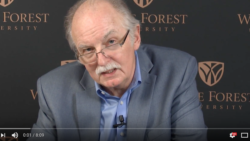
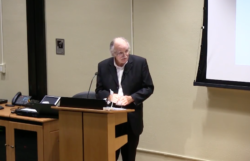
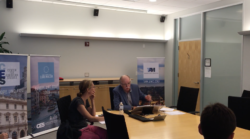
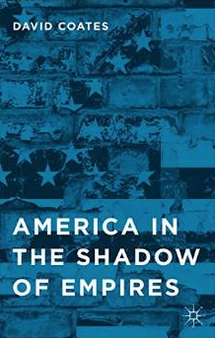
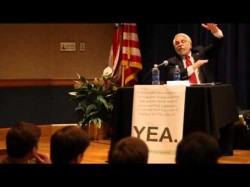

Foreclosure Politics Here and Across the Pond – Professor David Coates on a Mandelman Matters Podcast | Challenge Your Lender says:
[…] David’s latest article, for example, is titled: Republican Truth and the Real Truth: GSEs and the Housing Bubble. […]
David Coates: The White House and Your House: Policy Inertia and Organizational Resistance in the On-going Crisis of American Housing says:
[…] Republican Truth and Real Truth: GSEs and the Housing Bubble David Coates on Google+ jQuery('.page-template-page-publications-php .page-item-8').addClass('current_page_item'); […]